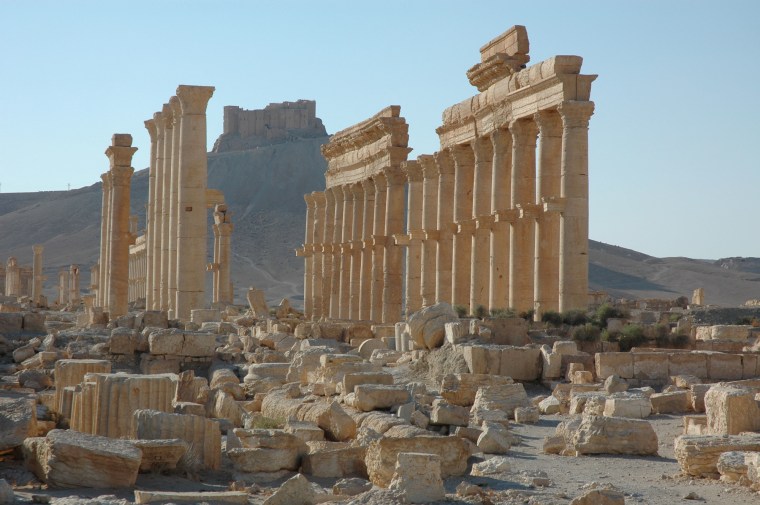Almost a year after ISIS seized control of the ancient city of Palmyra, Syrian government forces were on the verge of retaking the 2,000-year-old UNESCO world heritage site, an official and opposition monitoring group said.
"We might witness in the next 48-hours an overwhelming victory," Gov. Talal Barazi told the Associated Press from the nearby city of Homs. "The army is advancing in a precise and organized way to protect what is possible of monuments and archaeological sites."

However, the British based activist group, the Syrian Observatory for Human Rights said the Russian-backed forces loyal to President Bashar Assad, were facing tough resistance in the "violent clashes" with the militant Islamist group.
The observatory, which monitors the conflict through a network of activists on the ground, added that ISIS had "planted large quantities of landmines" in and around the city.
However, more than 200 militants had died since the government began its campaign earlier this month, the observatory said. They did not have the figures for government losses.
Strategically the city is "not a major objective" for ISIS, according to Anthony Cordesman, the Burke Chair in Strategy at the Center for Strategic and International Studies, a Washington, D.C.-based think tank.
"ISIS' main lines of communications and trade were elsewhere," he said, but added that the group was "under pressure."
"Every time there is a loss it affects their morale ... and it gives them problems establishing or maintaining control over populations that have very little reason to fall in love with them."
Cordesman, who has served numerous U.S. government roles and was awarded the Department of Defense Distinguished Service medal, added that the group was losing finances and there was a lot of anecdotal evidence that the people were trying to escape the group. Losing Palmyra would be "symbolically important," he said.
"Every time there is a loss it affects their morale, recruiting, their finances and it gives them problems establishing or maintaining control over populations that have very little reason to fall in love with them," he said.
Before ISIS swept into the city last May, Palmyra was designated a site of "outstanding universal value" by UNESCO, the United Nations cultural agency, which described the city as "one of the most important cultural centers of the ancient world."
Known as "Venice of the Sands," it was the crossroads for several civilizations and featured influences from ancient Rome, Greece and Persia.
Built on an oasis in the Syrian desert, the centerpiece of Palmyra's ruins was a 1,000-yard colonnaded main street that links to the remains of temples, a theater, houses and other public monuments. There was also a Roman aqueduct and what UNESCO called "immense necropolises."
But after taking the city, ISIS began to lay waste to the ancient site. They also beheaded Khaled al-Asaad — one of Syria's most prominent antiquities scholars, before strapping his body to one of the town's Roman columns.
Related: ISIS Beheads Archaeology 'Pioneer' in Palmyra
ISIS had reportedly tried to extract information from the 81-year-old about where some of the town's treasures had been hidden to save them from the militants, state media reported.
The group had previously destroyed a number of famed ancient sites in northern Iraq, including the Mosque of the Prophet Younis — or Jonah — and the Mosque of the Prophet Jirjis, two revered shrines near the city of Mosul.
The extremists have claimed they destroy the historic sites because they promote apostasy — but the group was also accused of looting "on an industrial scale" in Syria and selling some of the relics on the black market.
In Palmyra, they destroyed the Roman era temple of Baal Shamin, one of the most important sites in the ancient city, in August. Two months later they grew up the Arch of Triumph, a jewel in the exquisite collection of ruins in the oasis city.